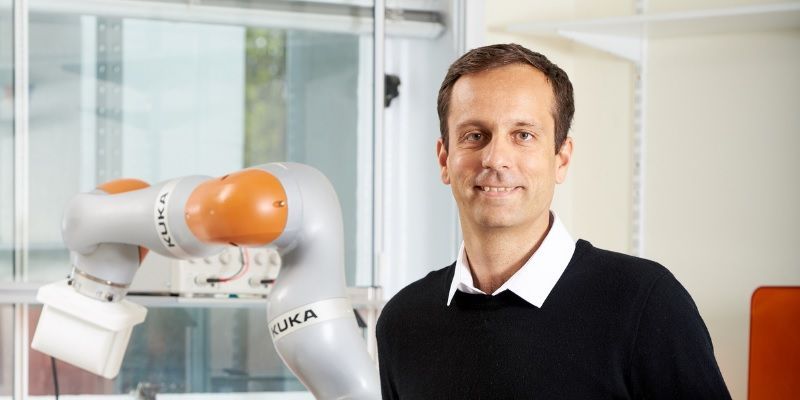It sounds like the stuff of science fiction, but submitting yourself to a robotised colonoscopy may not be too distant a prospect, thanks to technology developed by scientists at the University of Leeds.
Work on a new type of robotic endoscopy could potentially change medical procedures forever, by enabling diagnostic access to areas deep inside the body that have previously been hard for doctors to reach.
Endoscopy – sending cameras inside the body – has very clear benefits to patients because it is minimally invasive, but present procedures need a great deal of training for surgeons, and operating them requires high dexterity and causes unnecessary fatigue.
For example, a colonoscopy – a procedure to examine the rectum and colon for diseases such as colon cancer – involves doctors manipulating a semi-flexible tube with a camera, which is inserted via the anus. It’s a necessary procedure, but a process some patients find so painful they require an anaesthetic.
Less painful
Now Leeds researchers at the University’s STORM Lab (Science and Technologies of Robotics in Medicine) have pioneered a technique of using a much smaller, capsule-shaped magnetic camera which can be guided into place by strong magnets in a robotic arm positioned over the patient.

While medical staff can learn how to operate the arm themselves, the research team has found that the robotic arm itself can be programmed to guide the camera to the precise spot needed, resulting in 100% accuracy.
As well as being far less painful for patients, this would potentially mean that medical staff could focus solely on the associated clinical tasks they are performing, such as looking at camera pictures and taking biopsies, rather than operating equipment.
Transforming diagnostic procedures
This is just one of the ways that Leeds researchers are using this type of magnetic manipulation that could potentially transform existing diagnostic procedures.
Magnetic fields are key, as they penetrate human tissue without causing any harm to the patient.
Professor Valdastri adds: “As well as allowing us to manipulate these tiny medical instruments, they allow us to precisely localise them in the right part of the body, something that has been very difficult to do before this.”
Another application the team is exploring is in the lungs. The air passages in our lungs vary in size, narrowing from the main trachea (a couple of centimetres) to the bronchi and to the very narrowest airways or bronchioles, which can be as small as half a millimetre in diameter.
Doctors use a bronchoscope to take a close look at the air passages in the lungs – a flexible tube-like instrument that can be fed down the trachea or windpipe and manipulated into the bronchial passages. Through this, smaller catheters can be passed for the very narrowest bronchioles. But doctors are presently limited in how much they can move a bronchoscope, making it difficult to guide the instrument and a catheter to precisely where they are needed.
Personalised guidance
STORM Lab researchers have been pioneering a magnetic tentacle robot that is much more manoeuvrable, and uses an autonomous robotic guidance system that can be personalised for each procedure.
It features a series of tiny interlinked cylindrical segments made of a soft, rubber-like material that contains minute magnetic particles.
Because of the presence of magnetic particles, the interlinked segments can move somewhat independently under the effect of an external magnetic field coming from two robotic arms over the lungs. The result is a highly flexible robot that can change its shape, and is small enough to avoid getting caught on the minute internal anatomical structures.
The team have tested their work in the lab, using a 3D replica of a bronchial “tree” modelled from anatomical data. The next phase of the research will investigate the effectiveness of the device in navigating human lungs.
Next step: human trials
Professor Valdastri says: “We believe our magnetic tentacle robot will be able to reach most areas of the lung, and would be an important clinical tool in the investigation and treatment of possible lung cancer and other lung diseases.”
The colonoscopy robotic system is currently going through the regulatory process for “first-in-human” clinical trials.
Professor Valdastri adds: “We are passionate about the diagnostic changes this system could potentially bring to so many different areas of healthcare. And if intelligent robotic control could take over the job of manipulating devices to the right spot, this would also relieve the mental and physical demands on the medical team, freeing them up to use their skills on the most important part of the job.”
More information
Find out more about robotics research at the University of Leeds:
Pipebots website – a project with the University of Sheffield, using robots in underground pipe networks.
Coronavirus disinfection (news article) – preventing the spread of Coronavirus in public places.
Science and Technologies of Robotics in Medicine (STORM) Lab website